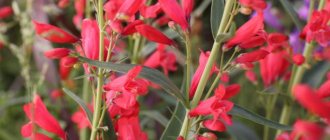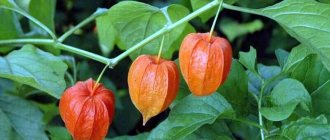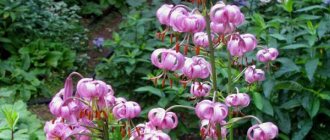Roses are rightfully considered the most beautiful and popular flowers, the brightest varieties of which all gardeners want to get their hands on. As beautiful as they are, they are just as meticulous to care for. Growing a queen of flowers on your own site is always accompanied by a huge number of problems and difficulties that can lead to the death of the flower. If you really want to plant a rose in your garden, but are afraid of possible difficulties, turn your attention to roses of Canadian selection, which are less demanding in terms of growing conditions and cold weather.
The beauty of the Canadian park rose is in no way inferior to representatives of other species, but it will bring less trouble. In addition, today breeders have developed a huge number of varieties of Canadian park roses that have a simply gorgeous appearance.
In this article we will look at the features of growing Canadian roses in open ground, we will give a description of the most popular varieties of this flower and note the important points of planting and care.
Features and description of Canadian roses
Every gardener carefully selects types and varieties of flowers for his garden or flower garden. For experienced specialists, everything is important: beautiful and bright inflorescences, flowering duration, frost resistance and unpretentiousness to growing conditions. If we talk about noble varieties of roses, they are more fastidious and scrupulous. That is why breeders around the world have long tried to develop varieties of roses that can withstand the most severe frosts. Canadian scientists began to carry out the most extensive work on the selection of frost-resistant roses. Back in the late 19th century, Canadian breeder William Sanders began work on breeding the ideal rose. To do this, he crossed the hardiest interspecies roses and got a hybrid that passed the frost test of 30 degrees.
At the beginning of the 21st century, his work was continued by Isabella Preston, who was a friend of the scientist. She did a lot of work to breed the most frost-resistant ones and she succeeded. It was she who received the rose, which can withstand severe frosts better than others. For her work, she took wild varieties of roses. growing in prairies and deserts. Since then, Canadian roses have spread throughout the world. In the last century, the Canadian government allocated funds for the development of new varieties of frost-resistant roses. They went to finance two laboratories - Morden and Ottawa. This led to the emergence of the most popular groups of Canadian roses: the Explore group and Canadian park roses. All of them absorbed all the best qualities of this crop and became a real discovery for gardeners.
The work of Canadian breeders was appreciated by gardeners from all over the world, who began to actively order these frost-resistant beauties for cultivation in the most unfavorable conditions. To obtain such spectacular roses, hybrid varieties of roses rugosa and roses Cordes, as well as various species of roses, were used, which made it possible to obtain the most decorative flowers.
Description of the Canadian rose:
- Canadian roses are new to the world floriculture market. However, every year these flowers are gaining more and more popularity and love from rose fans around the world.
- The main achievement of Canadian scientists is obtaining roses with a high level of frost resistance. According to reviews, Canadian roses can withstand frosts not only in Canada, but even in Alaska. Representatives of this variety winter well in temperatures ranging from minus 35 to minus 45 degrees, even without shelter.
- These roses can occasionally freeze when the temperature changes, but after that, with a slight warming, they very quickly recover and bring their beauty back to normal.
- Canadian roses are distinguished by their ease of care and ease of reproduction.
- Canadian scientists have achieved long and abundant flowering with their work. The flowering of these roses begins around July and lasts until frost, which prolongs the decorative effect of Canadian rose bushes.
- The Canadian rose has a beautiful bush shape; groups of bush and climbing roses have been bred. They can reach approximately 50-300 cm in height.
- Canadian rose bushes are also distinguished by beautiful and rich foliage, as well as a small number of thorns.
- The main decoration and dignity of Canadian roses are flowers, which can be of very different shapes and sizes. The spectacular double inflorescences amaze the imagination. The diameter of Canadian rose flowers can reach approximately 5-15 cm.
- These roses are different in that they have two waves of flowering, the second of which is less abundant.
- After the inflorescences fade, the bush becomes covered with fruits. If you do not remove them, then during the second wave of flowering the bush will look very beautiful and decorative.
- Canadian roses have good resistance to pests and diseases, even if the plant is planted in the shade.
- Breeders have developed two groups of Canadian roses: Explore and Parkland. The first varieties are distinguished by climbing and very fragrant roses, the second group of varieties is distinguished by their varied shades and shapes of flowers.
- Canadian roses are widely used in landscape design. They decorate flower beds, make chic arches and weave around gazebos, and create hedges.
Features of the variety
Experienced flower growers know that caring for ornamental plants takes a lot of time and effort. In addition, not all flowers are able to survive in harsh climates. Canadian breeders have developed varieties of roses that are resistant not only to cold weather, but also to powdery mildew. Here are their main advantages:
- long flowering period;
- pleasant but unobtrusive aroma;
- ability to propagate by cuttings;
- no difficulties in care;
- the ability to plant in open ground, even in cold regions;
- well suited for creating hedges.
Pink Canadian
In addition, the Canadian rose does not require additional shelter during cold weather. The flower has a double or semi-double texture. There are buds in white, pink, red, cream and salmon shades.
Attention! In the descriptions of nurseries, the Canadian rose is called unpretentious and resistant to cold. Of course, success largely depends on the specific site and microclimate of the region.
The seedlings feel great even in northern latitudes. These flowers can decorate any garden.
Frost resistance
Canadian rose, as a rule, looks more modest than other varieties, but can withstand even 30-degree frost. This flower really does not require covering from spunbond or spruce branches. The flowering period begins in the first days of summer and ends with the onset of the first frost.
In the first winter, to be on the safe side, it is necessary to cover the base of the bush with sand and earth in equal parts.
Lush flowering
Roses of Canadian selection are resistant to weather changes. They are able to bloom luxuriantly all summer. The leaves of the plant are rich green. The variety of shades and small number of thorns have made these varieties popular among florists and decorators. Flowering can continue until frost. Its start depends on the region.
Note! Canadian roses have two waves of flowering. The second lasts less. However, the flowering is not so abundant.
Recovery after frost
Breeders from Canada have long worked to develop roses that can withstand extreme cold. As a result, scientists have discovered flowers with excellent regenerative abilities. Rapid recovery after cold weather is inherent in the genotype of the plant. If the crown freezes completely, branches can grow back from renewal buds on the roots.
Disease resistance
Canadian roses are an excellent solution for novice gardeners and those who do not want to spend a lot of time caring for their flower beds. This unpretentious plant is famous for its increased resistance to disease.
Some varieties of Canadian roses are often attacked by pests, most often the green rose aphid. For prevention purposes, it is necessary to treat the plant with systemic or contact insecticides.
Growing is quite simple
Variety of Canadian rose varieties
Every year, the Canadian rose wins the love of gardeners around the world, especially those who are engaged in floriculture in temperate climates with constant temperature changes and cold winters. Today, the Canadian rose, the best varieties of which can decorate any area, is one of the best representatives of this species, competing with such royal species as floribunda and Austin roses. In addition to Canadian selection, there are now varieties of frost-resistant roses from American and other selections. However, there are two groups of truly Canadian roses: Explore and Parkland. Here is a description of the most popular varieties of Canadian roses.
Canadian roses Explore
- Variety Henry Hudson. This is a Canadian park rose, which is characterized by its short growth - approximately 50-90 cm in height. The diameter of the bush can reach 80-100 cm. This variety of Canadian rose was obtained in 1966. Flowering occurs twice, and the second time is less abundant. The flowers are white with a slight reddish-pink coating and can reach approximately 5-7 cm in diameter. The flower consists of approximately 20 petals. In appearance, the flowers of this Canadian rose resemble apple tree inflorescences and are very fragrant. The variety is resistant to many diseases, including spotting and rot.
- Variety David Thompson. This variety was obtained in 1971. The Canadian rose bush is of medium size, which can reach a height of about 1.2-1.3 m. The bush also grows in diameter by about 120 cm. It is distinguished by beautiful lush flowers of a crimson hue, which can be 7-8 cm in diameter. The flower consists approximately 25 petals. Flowering is very long. begins in summer and lasts until autumn. The variety can withstand frosts down to minus 40-45 degrees.
- Variety Jens Munk. This variety of Canadian rose has a powerful root system. Forms stems up to 2 m high. Flowering begins in early summer and lasts until the end of August. The flowers are medium sized, approximately 7-8 cm in diameter, and consist of approximately 25 pink petals.
- Variety John Cabot. A very popular variety of Canadian rose, which was obtained in 1969. This is a climbing Canadian rose, the stems of which grow 250-300 cm in length. The flowers are lush, consist of approximately 40 petals, the inflorescence is 7-8 cm in diameter. The color of the flowers is crimson. The Canadian rose of this variety blooms in June-July and August-September. It is resistant to some diseases.
- Martin Frobisher variety. The variety was bred in 1962 and became the first in the whole group of Canadian Explore roses. The height of the bush can reach approximately 1.5-2 m. The flowers are small, up to 6 cm in diameter, consisting of an average of 40 petals. The color of the inflorescences is pink.
- Variety Alexander MacKenzie. This variety of Canadian rose was obtained in 1972. It is a very tall and powerful bush, which can reach a height of about 1.5-2 m. The flowers are double, consisting of 40-50 petals, approximately 6 cm in diameter. The flowers bloom in racemes, which consist of 6-12 pieces . The color of the flowers is red. Flowering begins in early summer.
- Variety Frontenac. The variety was obtained in 1981. The bush is formed by erect shoots up to 1 meter in height. This variety of Canadian rose pleases with very abundant flowering, during which the entire bush is completely covered with flowers of a dark pink hue. Flowers are collected in brushes of 8 pieces. The diameter of one flower is approximately 8 cm. Flowering begins in June and lasts until September.
- Variety Henry Kelsey. A variety of climbing Canadian rose, which was obtained in 1972. It is a bush with flexible shoots up to 2-2.5 m in length. Flowering is abundant and continues throughout the season. The flowers are collected in clusters of 9-18 flowers, each flower is approximately 6-8 cm in diameter. The flowers are red in color and have a pleasant spicy aroma.
Canadian roses Parkland
- Adelaide Hoodless variety. This variety was obtained in 1975. The bush is formed by curved shoots up to 1 meter in length. At the very beginning of flowering, the flowers have a dark pink hue, which later turns red. The bush blooms with large inflorescences, which consist of 35 flowers. Each flower is approximately 7 cm in diameter. Requires removal of faded inflorescences to obtain re-blooming.
- Variety Prairie Joy. A very dense bush that can reach 1.5 m in height. The flowers have a pink tint and are collected in inflorescences. Flowers bloom on the bush constantly throughout the summer. Used for hedges.
- Hope for Humanity variety. It is one of the most frost-resistant varieties of Canadian park roses. It is a low-growing shrub that can reach only 50-60 cm in height. The flowers are double, dark red in color, reaching approximately 7-8 cm in diameter. Flowering is continuous.
- Morden Sunrise variety. This is the first yellow-flowered Canadian rose variety in the Parkland group. It is distinguished by its short stature, only up to 70-80 cm in height. The flowers are yellow or yellowish-orange in color, collected in small brushes of 4-8 pieces. Flowers exude a pleasant aroma.
- Variety Cuthbert Grant. This variety is one of the most popular of this group of Canadian roses. It is an upright dense bush, reaching a height of 80-100 cm. Flowering begins in June and repeats in September. Double flowers up to 10 cm in diameter, red in color with a velvet tint.
Pink roses
Prairie Joy . Shrub with a diameter of 1.25 m and a length of 1.5. In landscape design, bushes are planted one at a time or in groups. It achieves decorative effect in cold climates. Continuous flowering occurs throughout the summer. The originality of the variety is in its buds. On one specimen, double and densely double flowers grow. Does not require special care. Disadvantage: not resistant to rain.
Frontenac. (Frontenac) . Semi-double petals change color while they bloom. A fully opened bud of dark pink or light crimson color contrasts interestingly with the darker and brighter petals inside.
William Baffin climbing plant . Among her brothers, she can be called the tallest. After all, the height can reach 3 m. Bright pink semi-double petals have golden stamens with a pale pink border. The bud is interesting because it curls inward. The contrast between the inside and outside of the petals stands out well. In full bloom it looks like a species rose. The leaf color is dark. The variety is resistant to diseases. The method of propagation is cuttings. Has no smell. Due to the tall shoots, trellises should be used. Flowering continues throughout the summer.
Morden Centennial . The inflorescences of the variety tend to fade. If the bush produces bright crimson shades, then over time they change to a bright pink color. If you trim faded terry buds in time, new ones will form. The foliage is dense green. The shrub is erect, vigorous and disease resistant. In some cases, it may be subject to black spotting.
Century-old Canadian rose (pictured above). The breeders did their best with this variety and grew unusually beautiful, large, double inflorescences of a pink hue. The positive side is that it blooms throughout the summer season. The spreading of the bush is 1 m, height is 1.5. Century old. Reviews about this variety say that it grows not only in light areas, but also tolerates partial shade. Not a capricious bush to care for, it tolerates winters well.
Reproduction of Canadian roses: the most common methods
Canadian breeders have done a lot of work to make roses more unpretentious and widespread. Therefore, Canadian roses have received the easiest method of propagation - cuttings, which even the most inexperienced gardener can handle. In addition, cuttings can be planted directly in a permanent place. completely unafraid of cold weather or other unfavorable circumstances. The Canadian rose is not afraid of this, unlike other species. Here are detailed instructions for propagating Canadian roses by cuttings.
Propagation of Canadian roses by cuttings
- Cuttings of the Canadian rose are taken in mid-summer, using young and strong shoots, fully formed and already faded.
- Each shoot must be cut into two parts of 25-30 cm. This length will allow Canadian rose cuttings to take root faster, since most of them will be immersed in the soil and will be able to absorb more nutrients necessary for the growth of young seedlings.
- The lower part of each cutting should be cut at an angle, this will make it easier for the planting material to sink into the soil.
- Next, you need to properly prepare the cuttings for planting in the soil.
- All leaves except the top two need to be trimmed.
- For faster and more successful rooting, Canadian rose cuttings must be placed in a solution of a root stimulator for several hours.
- Canadian rose cuttings can be planted directly in open ground in a permanent place, as they are very hardy.
- Planting material must be buried in the soil at a slight slope. At the same time, it is worth remembering the required distance between Canadian rose seedlings, which must be maintained. For low varieties it is 35-40 cm, for medium-sized varieties - 50-60 cm, for tall varieties - 1 m.
- Buried cuttings must be watered generously and covered with a plastic jar.
- Shading is important for young seedlings.
- All seedlings usually take root by autumn, but the cover needs to be removed only in the spring.
Reproduction by layering
Hydrangea paniculata (paniculata) - varieties, planting and care in open ground
Canadian uncovered roses are propagated using cuttings. In mid-summer, healthy and young shoots are cut from an adult mother plant. Seedlings must be immediately dug into the ground. This is necessary in order not to damage the root branches. For the first winter, young plants must be covered with earth.
A month before planting, the ground needs to be weeded. The cuttings should be covered with half plastic bottles. This cover must be removed after the snow melts.
Among the best varieties are bright red
Preparation before planting Canadian roses
Planting a Canadian rose is no different from other varieties of this beautiful flower; it involves simple actions and manipulations that do not require additional skills. However, many gardeners are still afraid and do not risk ordering seedlings of this beautiful flower without knowing all the nuances of growing the plant. Although everything here is elementary simple - the main thing is to carry out the preparatory work correctly, which should consist of selecting and purchasing high-quality planting material, as well as selecting an ideal place for planting.
Stage 1. Selecting a variety and seedling of Canadian rose
- Planting a Canadian rose should begin with choosing the variety you need. Today there is a wide variety of the most unusual and spectacular varieties of Canadian roses, which belong to Canadian selection, American and other developments. The best option would be to purchase rose varieties that were developed in Canada. These flowers are distinguished by better frost resistance.
- You can buy Canadian roses online directly from the homeland of these beautiful flowers; a few varieties of this species can be purchased in nurseries and garden centers. But if you want to get your hands on the rarest varieties, you will have to use the Internet.
- You should not chase cheap prices and buy seedlings near roads or in spontaneous markets, since these flowers have not yet spread en masse throughout Russia and you may not buy exactly what you wanted.
- If you buy a seedling from a specialized garden center or nursery, be sure to inspect it carefully. There should be no visible damage or signs of rot on the shoots and root system. There should also be no signs of disease or traces of pests.
- The seedling must be grafted.
- Depending on the time of purchase of a Canadian rose seedling, it may have an open root system or a closed one. Seedlings in a container can be planted at any time.
Stage 2. Choosing a place to plant a Canadian rose
- Canadian roses are distinguished by their unpretentiousness and can grow and bloom beautifully anywhere. However, to get a beautiful, lush bush with an abundance of flowers on it, it is important to choose the most suitable place.
- First of all, the selected area should be sunny and open, although light partial shade is acceptable when growing Canadian roses in open ground. Direct sunlight should not constantly fall on the rose bush.
- Since the Canadian rose does not really like transplanting, the place must be chosen carefully.
- The place you choose should be well ventilated.
- Canadian roses can be used to create beautiful hedges, to weave around arbors and arches, to create trunks and to decorate flower beds and garden compositions. They look great with other flowering plants.
Stage 3. Selection and preparation of soil for planting Canadian roses
- Roses of this variety prefer to grow on fertile and nutritious soils.
- It is also important that the soil at the planting site is loose and light with a neutral or slightly acidic reaction.
- Good drainage is important, as prolonged stagnation of water can damage the roots.
- Some time before planting Canadian roses in open ground, it is recommended to prepare the soil in the place you choose. To do this, you need to remove all the weeds and carefully dig up the area, about 2 shovels deep. At this time, it is important to add humus, peat, wood ash and complex mineral fertilizers to the soil.
How to land
The Canadian rose is quite easy to grow and breed: it quickly gets along with neighboring flowering crops. In this case, everything will depend only on the features of the composition.
Choosing the right seedling
For planting, it is important to choose seedlings with long and strong legs. You need to remove excess leaves from the shoots, except for the top couple. The seedlings should have small roots: it is important not to damage them during planting in the soil.
The best time to plant roses is autumn . Over the winter, the roots of the seedling will have time to strengthen and develop well, delighting the gardener with strong branches in the spring. Canadian roses love full sun, but don't need to be planted in a direct source of bright light. The best place in this case would be a ventilated area with a little shade .
Experts do not recommend planting roses on the south side of the house. Under the influence of sunlight in winter, the mass of snow in such places quickly thaws and freezes again. Such temperature changes lead to freezing of plant shoots.
Preparing the soil mixture
Before planting, you need to prepare the site and soil mixture in advance. A common hole is dug with a diameter of 70*70 centimeters. The hole should be filled with loose and non-acidic soil, fertilized with an organic and mineral composition. It is recommended to use peat, humus or fine wood ash as organic matter. After planting is completed, it will be better to hill up the seedlings.
Features of care
The plant is not at all capricious. The main care will take place in spring and summer. Minimal requirements for watering, proper pruning, light shelter for the winter - that's all the plant needs.
The rose is very often mentioned as a Christian symbol. In the Middle Ages, Christians interpreted such a symbol as heavenly bliss, consolation and faith. Also, Saint Cecilia often wore a wreath of roses.
Watering roses continues from spring to summer inclusive. You need to water the plant in the mornings or evenings several times a week. During regular rains, the plant should not be watered. It is also important to ensure that the soil near the plant is moist. Water the rose at the root, while trying not to get it on the shoots and leaves of the plant. At the end of summer and with the beginning of autumn, watering stops to prevent late shoots from growing. You should start fertilizing roses the next year after planting. In spring, you need to apply liquid mineral fertilizer after watering the crop.
Pruning young bushes
Every year the rose bush requires pruning. Old and damaged branches, as well as overgrown shoots, should be trimmed. This is how you will get a beautiful crown and direct all the nutrients to the development of flowering branches and buds. After flowering, you need to cut off all the branches that no longer produce inflorescences. All cut areas must be treated with garden varnish.
Despite the fact that such roses are considered frost-resistant, it is best to cover young bushes for wintering. To do this, the bushes need to be hilled up and the branches should be wrapped in craft paper. Because of this, the plant will not freeze and will also be protected from the negative effects of the sun in winter.
Technology for planting Canadian roses in open ground
- The planting process is quite simple and should not cause difficulties, the main thing is to do everything correctly.
- The best time to plant Canadian roses in open ground is autumn. This is due to the fact that during the winter the root system of the plant will have time to get stronger and in spring and summer the rose bush will show itself in all its glory. There is no need to worry about a young plant in winter - the Canadian rose is very frost-resistant.
- First of all, you need to prepare rose seedlings. To do this, you need to place them in a growth stimulator solution. It is also important to partially trim off the tops of the shoots.
- Next, prepare the planting hole for the rose. Its dimensions should be 70 cm deep and 70 cm wide. When planting several seedlings, you should definitely maintain a distance between them, which varies from 35 cm for low varieties to 1 m for tall plants.
- Next, you can add a layer of drainage to the bottom of the planting hole, which will protect the rose from stagnant water. Broken bricks and small stones are used as drainage.
- The pit is filled 2/3 with prepared soil, consisting of humus, peat, turf soil, wood ash and complete complex mineral fertilizer.
- Canadian rose seedlings are placed on the resulting layer and carefully sprinkled with soil. It must be remembered that the grafting site should be buried by about 5-10 cm. This is necessary for the normal development of the root system.
- After planting, young plants are watered abundantly and the soil around them is mulched with tree bark or sawdust.
Growing and care
Planting rules are the same as for other representatives of the rose family. Fertilized soil is poured into the hole, then a young seedling is placed and covered with a layer of mulch on top. For climates with cold winters, it is worth providing shelter for the plant, and in the fall you will have to remove weak, fragile shoots.
It is also recommended to add two or three buckets of compost before wintering. During winter, bushes covered with snow feel better. At the beginning of the season, with the arrival of a thaw, it is recommended to prune dead shoots, dry and weak branches.
The Canadian rose is loved for its unpretentiousness and resistance to harsh climatic tests. However, it is important to know and apply the rules of plant care for abundant flowering.
{SOURCE}
How to properly care for Canadian roses
As already noted, planting and caring for Canadian roses is not difficult. Here you don’t need to know many nuances or be able to perform complex actions; it’s enough to pay a little attention to the plant. For which the Canadian rose will thank you with a beautiful bush and abundant and long-lasting flowering.
- Watering. Canadian roses favor watering, so the plants need to be given water regularly. You need to water strictly at the root and to determine the watering regime, focus on the surface of the soil - it should be slightly moist. In dry and hot summers, you need to water more often. Watering stops at the beginning of September.
- Loosening and mulching. Regularly, especially after watering, the soil in the tree trunk circle must be loosened, but this must be done carefully. Mulch will help protect the plant from overheating of the roots and prevent moisture evaporation. It is recommended to use sawdust or tree bark as mulch.
- Trimming. Canadian rose bushes keep their shape well and do not require formative pruning. It is necessary to prune broken and damaged branches in the spring.
- Feeding. For the full growth and flowering of the Canadian rose, it is important to regularly fertilize. In the spring, you can feed the plant with nitrogen fertilizers, and in the summer it is recommended to apply phosphorus and potassium fertilizers.
- Shelter for the winter. Canadian roses feel great in our harsh winter, because they were created specifically for growing in the severe winter frosts of Canada. It is recommended to hill up the bushes only before the onset of cold weather.
What is special about roses of Canadian selection?
Canadian park rose variety Alexander Mackenzie
The first varieties of “Canadians” appeared in the last century in Canada, and a little later in European countries. Unlike many other varieties, they are famous for their frost resistance (from -30 to -45ºС), they do not require shelter for the winter. This is an excellent option for growing in cold climates.
Canadian roses are wide, highly branched bushes that can bear from 3 to 30 small flowers at a time. The aroma ranges from weak to strong, depending on the variety. The flower shape can be double and with one row of petals. Another feature of them is their rapid regeneration after freezing. Flowering continues from early summer until late autumn.
Photo of Canadian rose
The Canadian rose is an excellent replacement for all the well-known ostinas and floribundas, which are distinguished by their capricious disposition and fastidiousness. With the help of frost-resistant Canadian beauties, you can easily decorate your area without constantly worrying about the health of the flowers.
Original roses
Modern Blush variety , the most profusely blooming. The bush is short, compact - upright 75 cm, excellent for flower beds. The exception is the southern regions - it grows up to 2 m. Externally, the flower resembles a hybrid tea rose with dark green leaves and soft white-pink petals. In harsh winters it can freeze, but recovers quickly. The disease is black spot.
From reviews of the variety: “In the first vegetative year it bloomed beautifully. I couldn't stand the winter. We had to separate and uproot.”
Cuthbert Grant . Belongs to the scrub class. It is an upright growing shrub with powerful stems. The top is framed by red semi-double buds. Height 1.2 m, width – 1.2. The leaves have a cool, dark green hue and are slightly reddish in color. When the flower is fully open, the yellow stamens are visible. Fragrant. Flowering continues throughout the summer season. The bush will need support during shoot growth and flowering. The botanical garden in Montreal recognized it as an extremely resistant variety. This is explained by its origin from the species R. Arkansan and Rose Assinibena. Another distinctive feature is that it blooms early, but rests for a long time. After dormancy, the flowers appear more purple than they were at the beginning of the first stage.
Martin Frobisher . Roses are practically thornless and have excellent survival rates in various climatic zones. Fairytale hedges are made from this variety. If the inside of the flower is milky, the outside is pure white. The foliage is grey-green. The inflorescences have long stems and can be cut for bouquets. Before the buds fade, the petals turn brown. Flowering is abundant. The shrub is erect. The disease is black spot.
Champlain . An unusual variety, it blooms profusely all the time, only frost stops it. Rich bright red color of the buds with a bright red stamen. Semi-double. While a cold region is disease resistant, a humid climate favors powdery mildew. Flowers are successfully used for cutting, central flower beds, and mixborders.
Nicholas . Description of the variety: semi-double flowers delight gardeners with abundant flowering - June-September. The variety is propagated by cuttings. There is one drawback - sensitivity to climate. Unfavorable conditions contribute to the development of powdery mildew and black spot. The bush is compact, upright - 75x75 cm. Aroma with a citrus note. If zone 3, you won't need shelter.
Rose propagation
Canadian roses are propagated in three ways: by lateral layering, dividing the bush and cuttings.
Lateral layering
The side branches bend to the ground. A hole is dug nearby and the middle part of the layering is placed in it. An incision is made in the peel in advance so that young roots will subsequently form. The branches are pinned with wire and covered with earth. Water regularly.
If roots have not formed before autumn, then the cuttings are covered for the winter. In the spring, before the buds open, the branch underground is carefully cut off with pruning shears, and the rooted layer is transplanted to a new location.
Dividing the bush
The procedure is carried out in the spring, before the buds open. The bush is dug up, the root system is divided into several parts with pruning shears. Each part must have at least 5 branches and roots. In this position, they are planted in a new hole.
Application in landscape design
Canadian varieties have proven themselves well in landscape design. They are used to create hedges, borders, and planted in the center of a large flower bed. For arched compositions and the design of arbors, climbing varieties are used, for example, Cuthbert Grant or climbing John Cabot . Combined with John Davis and Alexander MacKenzie , the composition can be used as a backdrop for a multi-tiered rose garden. All of them coincide in terms of agricultural technology of shelter and type of growth.
Variety John Cabot.
Evergreen thujas and junipers are framed by Martin Frobisher in the creation of curtains. A spreading bush with white flowers and a delicate aroma will perfectly set off a hedge.
Martin Frobisher - this is the variety shown in the title photo.
In a mixed border with a vertical emphasis in the foreground, you can bring out the varieties Hope of Humanity, John Franklin , the Quadra Canadian rose (Quadra) in red or pink Moden Centennial , Lambert Closse .
Prairie Joy is perfect for a hedge ; it is magnificent for its continuous flowering.
Variety Prairie Joy in rock garden.











